Do you want to know how does selective breeding affect a dog’s appearance over generations, and why dogs do not retain their ancestors’ appearance? You’re in the right place.
Selective breeding involves mating dogs with specific traits to enhance or suppress certain characteristics, resulting in distinct changes in appearance, temperament, and even health over generations.
Topics
The following topics will be covered in this post:
- How Dogs Were Originally Created From Selective Breeding by Hunter-Gatherers
- The Mechanism of Selective Breeding
- Changes in Appearance of Dogs Over Generations
- Size and Proportions
- Coat and Color
- Facial Structure
- Ears and Tail
- Why Dogs Do Not Retain Their Ancestors’ Appearance
- Human Influence on Selection
- Relaxation of Natural Selection
- Genetic Drift
- Purpose-Driven Breeding
- Conclusion
RELATED
- Are German Shepherds Descendants of Wolves?
- How Slant (Sloped) Back German Shepherds Were Created?
- How to Know German Shepherd Breeder is Genuine?
- Are Panda German Shepherds Purebred?
- Are White German Shepherds Purebred?
- How to Extend the Lifespan of German Shepherd
- What Factors Determine If Two Dog Breeds Are Compatible For Breeding?
|| DON’T MISS! Today’s Deals on Chewy – Pet Foods, Products, Supplies, Toys and more…
01. How Dogs Were Originally Created From Selective Breeding by Hunter-Gatherers
Dogs trace their lineage to an extinct population of wolves selectively bred by hunter-gatherers during the Late Pleistocene, approximately 20,000–40,000 years ago. This remarkable partnership likely began when early humans and wolves coexisted in shared environments, hunting similar prey.
Some wolves, perhaps those less aggressive and more curious, were drawn to human campsites, scavenging scraps. Over time, humans encouraged the presence of these wolves, appreciating their keen senses and potential as hunting aids or sentinels.
Through selective breeding, these proto-dogs evolved traits that distinguished them from their wild ancestors, such as reduced aggression, smaller size, and a willingness to interact with humans. This mutualistic relationship marked the beginning of a profound bond, making dogs the first domesticated animals and inseparable companions to humans.
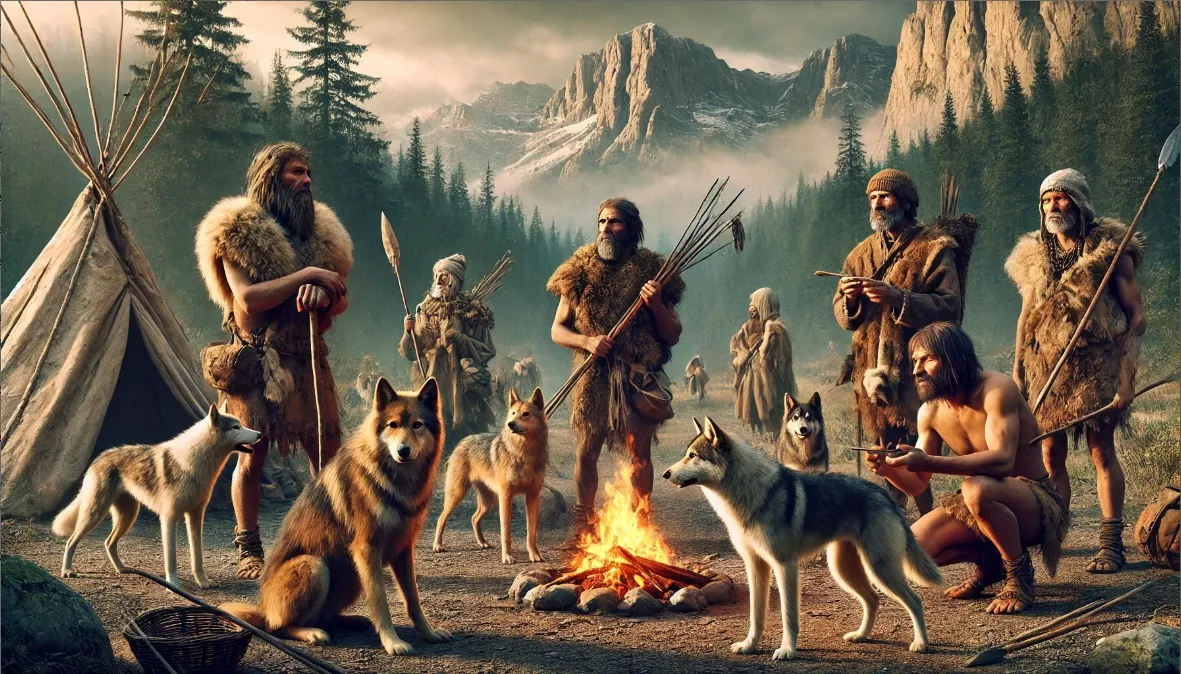
Over time, as societies evolved, selective breeding became more specialized. By the Victorian era, dog breeding transformed into a more systematic practice, giving rise to kennel clubs and formal breed standards. This era of intensified breeding aimed to create dogs that conformed to specific physical and behavioral traits.
For instance:
- Herders like Border Collies were bred for intelligence and work ethic.
- Hounds like Beagles were developed for their acute sense of smell and stamina.
- Toy breeds like Pomeranians were bred for companionship, emphasizing aesthetic appeal.
Related: Understanding the Prey Drive of German Shepherds
02. The Mechanism of Selective Breeding
Selective breeding works by humans choosing specific traits, such as size, coat color, ear shape, or even the length of a muzzle, and breeding individuals that express these traits most strongly.
Over generations, these traits become more pronounced or even fixed within a population due to:
- Unlike natural selection, where traits advantageous for survival dominate, artificial selection prioritizes human-desired traits.
- When breeding is restricted to a small gene pool, recessive traits can become prevalent, influencing appearance.
- Over time, novel mutations can introduce entirely new traits that are then selectively perpetuated.
| What is a Gene Pool? It refers to the total collection of genetic material, including all the genes and their variations (alleles), within a population of a particular species. It represents the genetic diversity available for inheritance and plays a key role in a population’s ability to adapt and evolve in response to environmental changes. What are Recessive Traits? These are characteristics that appear only when an individual inherits two copies of the recessive allele, one from each parent. If a dominant allele is present, it will mask the effect of the recessive allele, preventing the trait from being expressed. For example, blue coat color in some breeds, such as Weimaraners or Doberman Pinschers, appears only when a dog inherits two copies of the recessive allele responsible for the dilution of pigmentation. What is an Allele? It is a variant form of a gene found at a specific location on a chromosome. Different alleles can result in variations in traits, such as eye color or blood type, within a species. What are Novel Mutations? These are newly occurring changes in the DNA sequence that were not inherited from either parent. These mutations can introduce unique genetic variations and may affect traits or lead to genetic disorders. An example of a novel mutation in dogs is the short-legged phenotype seen in breeds like Dachshunds and Corgis, caused by a unique mutation in the FGF4 gene. This mutation, which likely arose spontaneously, leads to disproportionate dwarfism (chondrodysplasia) and has been selectively bred in these breeds. |

03. Changes in the Appearance of Dogs Over Generations
The following components contribute to changes in the appearance of dogs over generations:
Size and Proportions
Selective breeding has created enormous variability in size. For example, the Great Dane and the Dachshund were bred for vastly different purposes leading to a wide range of heights and body shapes.
Great Danes were originally bred in Germany to hunt large game, such as Deer, Wild boar, Bears, Bison, Antelope, Mountain lions, Water buffalo, Wild goats, Caribou, and Warthogs. Their massive size, strength, and speed made them ideal for this purpose. Over time, they transitioned from hunting dogs to noble guard dogs and companions, known for their gentle and friendly nature despite their imposing stature.
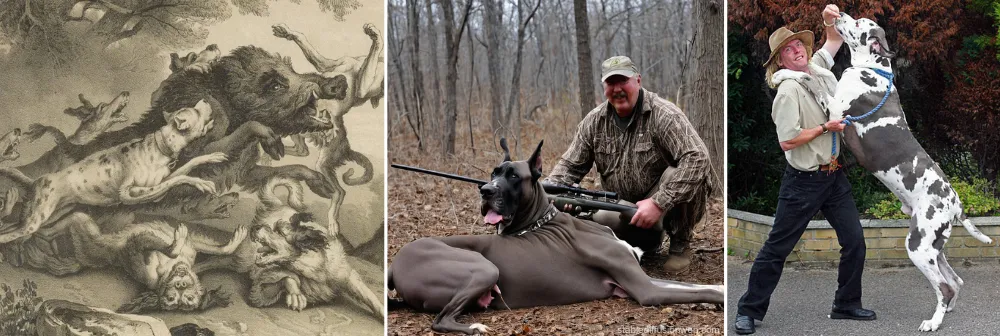
Dachshunds were originally bred in Germany to hunt and burrow for small animals like badgers and rabbits. Their long bodies, short legs, and strong paws made them excellent at digging into tunnels and tight spaces to flush out prey. Their name, “Dachshund,” even translates to “badger dog” in German.
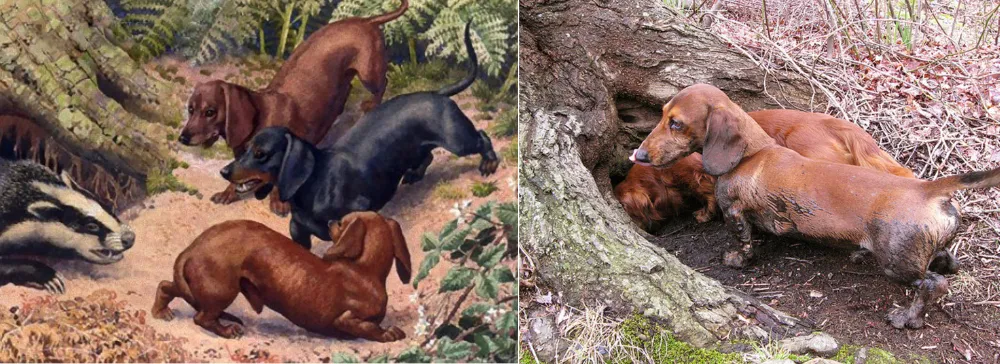
Coat and Color
Coat texture and color have undergone significant changes through selective breeding. Wolves typically have coarse, grayish coats for camouflage in the wild, but domestic dogs display a spectrum of colors, patterns, and textures due to human selection for aesthetics. Breeds like the Dalmatian exhibit unique patterns, while others, like the Poodle, are prized for hypoallergenic curly coats.
RELATED
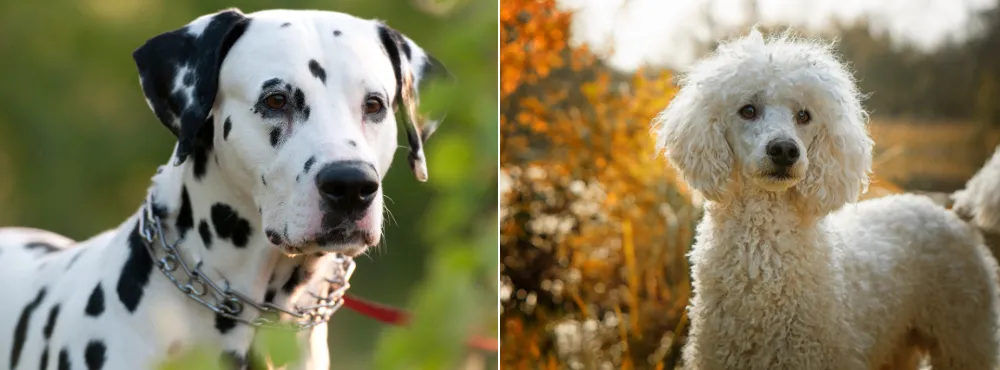
Facial Structure
Breeding for specific head shapes has created dramatic variations in dogs. Flat-faced (brachycephalic) breeds like Bulldogs and Pugs, for example, were developed for their endearing, human-like expressions. However, this often comes at the cost of respiratory health. Similarly, breeds like the Borzoi were bred for elongated snouts (long, extended noses or muzzles) to enhance their hunting efficiency and sense of smell.

Ears and Tail
Erect, floppy, or cropped ears, and tails of various lengths, are also the results of selective breeding. While upright ears are common in wild canines, many domestic dogs now have floppy ears due to genetic changes associated with domestication and specific breeding choices.
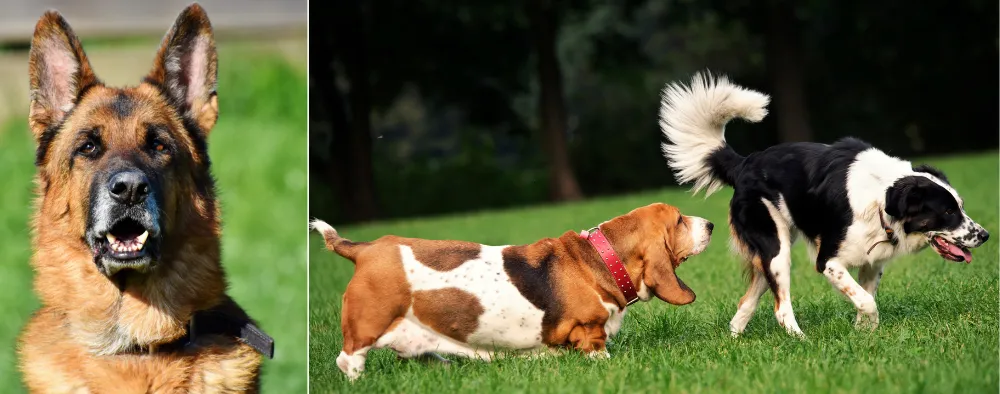
04. Why Dogs Do Not Retain Their Ancestors’ Appearance
Below are some of the important factors that tells you why dogs do not retain their ancestors’ appearance:
Human Influence on Selection
For instance, wolves’ streamlined bodies and thick coats evolved for survival, but humans bred dogs for purposes like herding, guarding, or companionship, which emphasized other traits.

Relaxation of Natural Selection
In the wild, wolves must hunt, avoid predators, and cope with environmental challenges. These pressures keep their appearance relatively uniform and optimized for survival. Domestic dogs, however, are shielded from these pressures. Traits that might hinder survival in the wild, such as short legs or (short-headed or flat-faced) faces, can thrive in a protected environment.
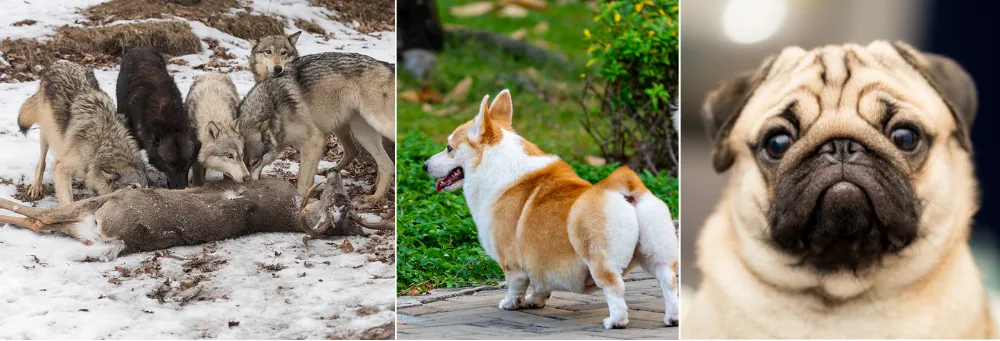
Genetic Drift
Selective breeding can cause random changes in appearance due to genetic drift, especially in small breeding populations. This randomness can amplify certain traits over generations, leading to dogs that look increasingly distinct from their wolf ancestors.

Purpose-Driven Breeding
The development of breeds for specific tasks ranging from herding livestock to serving as lapdogs has created significant divergence. For example, the thick, water-repellent coat of a Labrador Retriever is ideal for retrieving game in cold waters, while the sleek, hairless body of a Chinese Crested serves a decorative purpose.
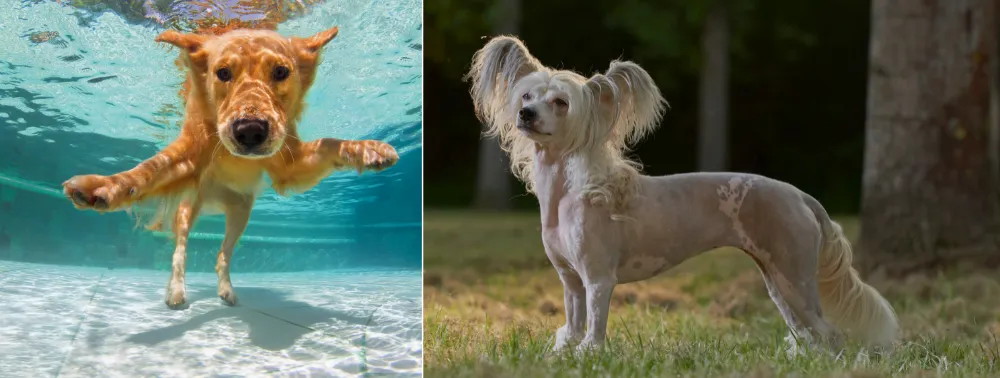
05. Conclusion
Selective breeding has profoundly altered the appearance of domestic dogs over generations, resulting in breeds that look remarkably different from their wolf ancestors. By prioritizing traits that align with human preferences or functional needs, breeders have created an astonishing variety of forms, sizes, and colors.
However, this process also underscores the delicate balance between achieving desired traits and maintaining the health and welfare of these beloved animals. Understanding the science behind these changes can help us appreciate the diversity of dog breeds while encouraging responsible breeding practices.
If you like this post don’t forget to share it with other people. Share your feedback in the comments section below.
Also Read
- How To Know What Type Of German Shepherd Do You Have?
- Degenerative Myelopathy in German Shepherds | Causes & Prevention
- Common German Shepherd Health Myths Debunked
- Role of German Shepherds in Therapy & Emotional Support
- Training German Shepherds for Families With Young Children
- Breeding Frequency for Male German Shepherds
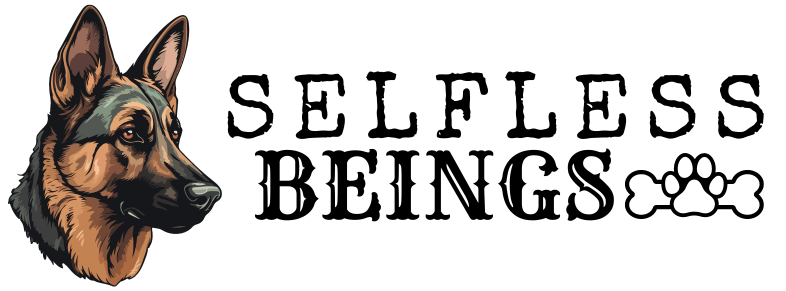
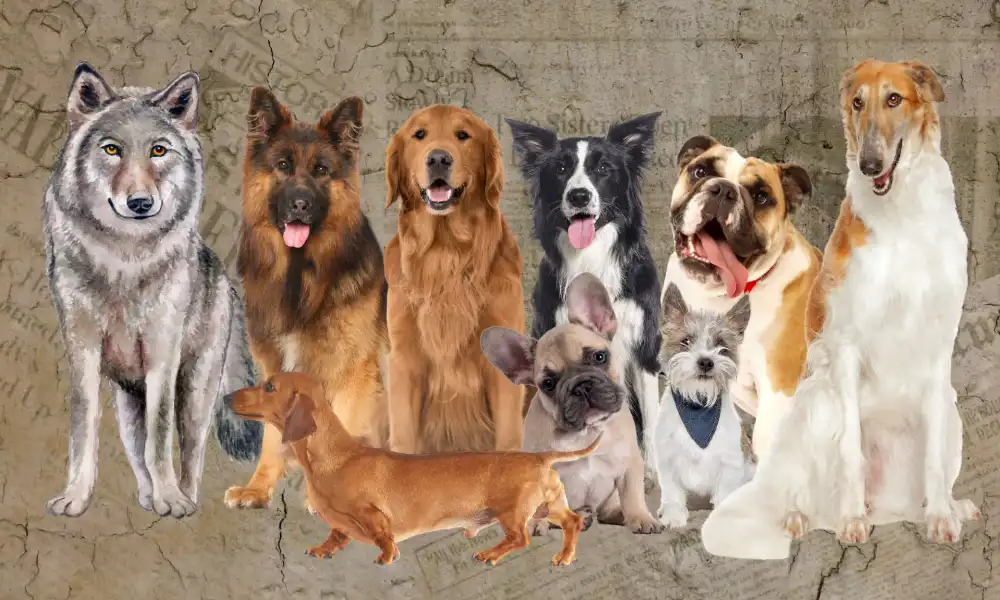
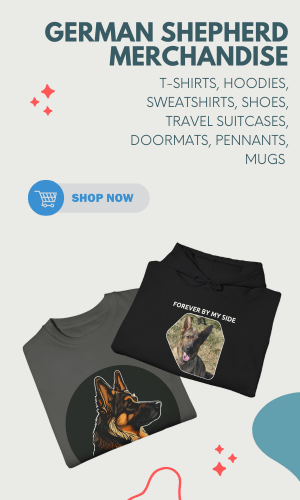

Leave a Reply